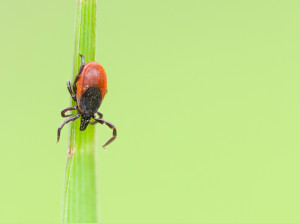Co-Infections
 Persistent symptoms of Lyme disease are due to chronic infection with the Lyme spirochete, possibly in conjunction with other tickborne diseases, or co-infections. These co-infections are other bacteria also transmitted by a tick bite, and are equally as important to screen for and treat appropriately. They present with overlapping symptoms, oftentimes similar to LD, making lab testing very important and necessary. The co-infections include the following:
Persistent symptoms of Lyme disease are due to chronic infection with the Lyme spirochete, possibly in conjunction with other tickborne diseases, or co-infections. These co-infections are other bacteria also transmitted by a tick bite, and are equally as important to screen for and treat appropriately. They present with overlapping symptoms, oftentimes similar to LD, making lab testing very important and necessary. The co-infections include the following:
Babesiosis:
Babesiosis is caused by a protozoal parasite, Babesia, which is transmitted by ticks. Babesia is a parasite that infects red blood cells. There are more than 100 different species, but the most common include B. duncani and B. mircroti.
Ehrlichiosis:
Ehrlichiosis is caused by a bacteria, Ehrlichia, which is transmitted by ticks. Ehrlichia, also known as Human Monocytic Ehrlichiosis (HME), infects white blood cells. There are several species of Ehrlichia, but the most common is Ehrlichia chaffeenis.
Anaplasmosis:
Anaplasmosis is caused by a bacteria, Anaplasma, which is transmitted by ticks. Anaplasma, or Human Granulocytic Anaplasma (HGA), infects white blood cells. Anaplasmosis was previously known as Human Granulocytic Ehrlichia (HGE).
Bartonella:
Bartonella is a bacteria that is transmitted by ticks, and can infect various cell types. Bartonella is in the same group known to cause Catch Scratch Fever.
Rickettsia:
Rickettsia is a bacteria that is transmitted by ticks, and can infect various cell types. Rickettsia is in the spotted fever group, with species known to cause Rocky Mountain Spotted Fever.